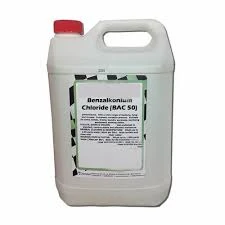scale and corrosion inhibitor
Scale and Corrosion Inhibitors A Comprehensive Overview
In various industrial settings, particularly in the fields of water treatment, oil and gas production, and cooling systems, the prevalence of scale formation and corrosion poses significant challenges. These phenomena can lead to decreased efficiency, increased operational costs, and potential system failures. To combat these issues, scale and corrosion inhibitors have emerged as crucial agents that help maintain system integrity and operational efficiency.
Understanding Scale and Corrosion
Before delving into inhibitors, it is essential to understand what scale and corrosion are. Scale refers to the buildup of mineral deposits, often calcium and magnesium, which occurs when water evaporates and concentrations of dissolved minerals increase. This can lead to blockages in pipes and equipment, reducing flow rates and increasing energy consumption.
Corrosion, on the other hand, is the degradation of materials, usually metals, due to chemical reactions with their environment. This process can be accelerated by factors such as oxygen presence, acidity, and the type of materials used. Corrosion not only leads to structural weaknesses but can also result in leaks and catastrophic failures in pipelines and storage tanks.
The Importance of Inhibitors
The use of scale and corrosion inhibitors is vital in managing these problems effectively. These chemicals work by either preventing the formation of scale or slowing down the corrosion process. The choice of inhibitor depends on the specific conditions of the system, such as temperature, pH, and the types of materials involved.
Types of Scale and Corrosion Inhibitors
1. Scale Inhibitors These are typically phosphate-based or polymeric compounds that interfere with the crystallization of scale-forming minerals. By suspending these minerals in a stable form, scale inhibitors ensure that they do not precipitate out of solution and adhere to surfaces. Common examples include polyacrylic acid and various phosphonates.
scale and corrosion inhibitor

2. Corrosion Inhibitors These can be classified into anodic inhibitors, cathodic inhibitors, and mixed inhibitors. - Anodic inhibitors work by passivating the metal surface, thereby reducing the anodic reaction that leads to corrosion. Compounds like chromates and nitrites fall into this category. - Cathodic inhibitors do the opposite by reducing the cathodic reaction in the corrosion process. An example of this is zinc salts. - Mixed inhibitors can affect both anodic and cathodic reactions, providing a comprehensive approach to corrosion control. A well-known mixed inhibitor is tannin.
Application of Inhibitors
The efficacy of scale and corrosion inhibitors hinges on their proper application. Factors such as concentration, compatibility with system materials, and environmental regulations must be considered. Many industries now utilize automated dosing systems to ensure that inhibitors are maintained at optimal levels, thus maximizing their protective effects while minimizing environmental impacts.
Furthermore, monitoring systems for scale and corrosion rates are integral to understanding the performance of inhibitors. Techniques like online corrosion probes and scale monitoring devices help in adjusting inhibitor dosage in real-time to adapt to changes in system conditions.
Environmental Considerations
As industries become more aware of their environmental responsibilities, the development of eco-friendly scale and corrosion inhibitors has gained traction. Traditional inhibitors, particularly those containing heavy metals or phosphates, can have negative impacts on aquatic ecosystems. Emerging alternatives are based on biodegradable compounds that effectively prevent scale and corrosion without harmful environmental effects.
Conclusion
In summary, scale and corrosion are significant challenges faced by various industries, leading to increased maintenance costs and operational inefficiencies. The use of scale and corrosion inhibitors plays a vital role in mitigating these issues, ensuring systems operate smoothly and efficiently. As technology advances and environmental regulations tighten, the focus on innovative and sustainable inhibitors will continue to grow, providing effective solutions that protect both industrial systems and the environment. Effective management through the use of these inhibitors not only prolongs equipment life but also enhances overall operational efficiency, underscoring their importance in modern industrial applications.
-
Dodecyldimethylbenzylammonium Chloride: High-Purity DisinfectantNewsAug.30,2025
-
2-Phosphonobutane-1,2,4-Tricarboxylic Acid: Scale & CorrosionNewsAug.29,2025
-
Premium Isothiazolinones | Broad-Spectrum Biocidal SolutionsNewsAug.28,2025
-
LK-319 Special Scale And Corrosion Inhibitor For Steel Plants: Advanced Solutions for Industrial Water SystemsNewsAug.22,2025
-
Flocculant Water Treatment: Essential Chemical Solutions for Purification ProcessesNewsAug.22,2025
-
Isothiazolinones: Versatile Microbial Control Agents for Industrial and Consumer ApplicationsNewsAug.22,2025





